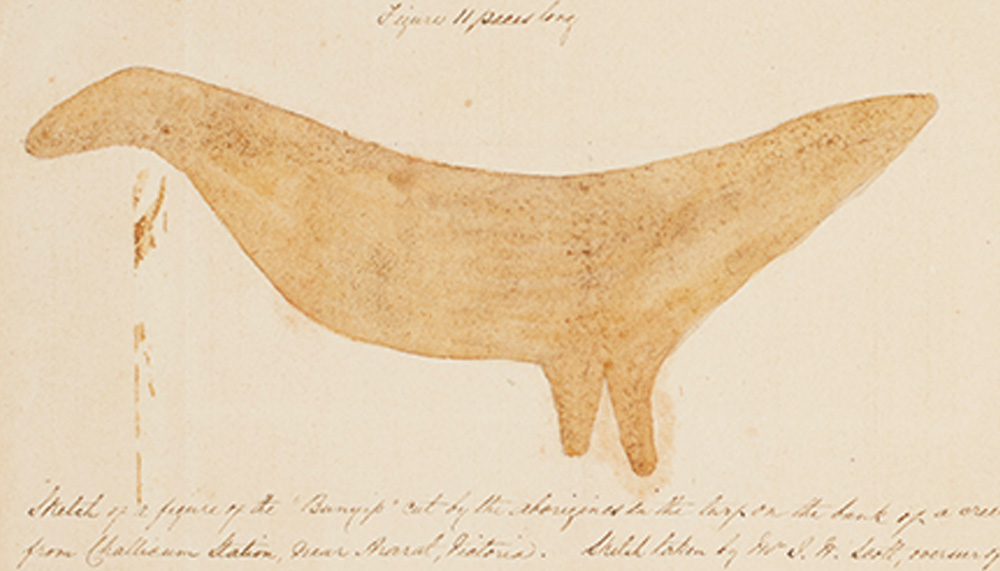Bertha the Bunyip in Murray Bridge, SA, is 50 years old in January, but the story of bunyips goes back many thousands of years.
Story Ken Eastwood Image Museum of Victoria
Known by various names throughout the south-east Australian mainland, the bunyip seems to be more loved than feared today. It has featured on multiple Australian stamps, and in children’s books such as Colin Thiele’s Gloop the Gloomy Bunyip and Jenny Wagner’s The Bunyip of Berkeley’s Creek. Everything from ships to a newspaper in Gawler, SA, have been named after the creature. Victoria has several creeks and swamps named for bunyips, as well as the towns Bunyip and Tooradin (based on its Boon Wurrung name in the area near Melbourne).
The ancient stories about the creature – which often differed wildly on what the bunyip looked like – never indicate it was anything but a fearsome, loathed beast that terrorised waterways, killing animals and humans, particularly at night. “I’m not aware of it ever being friendly,” says Professor Ian Clark, who has published extensive work on the history of the bunyip. “All across regional Victoria, you’ll find references to bunyips. There are different essential elements to each story.”
One of Ian’s favourite bunyip stories is of the so-called ‘Challicum bunyip’. “A long time ago” a bunyip had evidently loomed out of a waterhole near Ararat, Vic, killing an Aboriginal man. Others speared the creature and pulled it out onto the bank, and when it died they traced its outline in the earth. For many, many years afterwards, the Aboriginal people would revisit the spot to maintain the outline.
The outline was still being maintained in 1851 when this story was recorded, and the bunyip was sketched and measured at being 28 feet (8.5m) long. Its shape is that of either a giant bird or a seal. The site was fenced off for a while, but eventually got covered over with grass and then sheep grazed it, unfortunately wiping out any trace that anything was ever there.
This story excerpt is from Issue #140
Outback Magazine: December/January 2022










